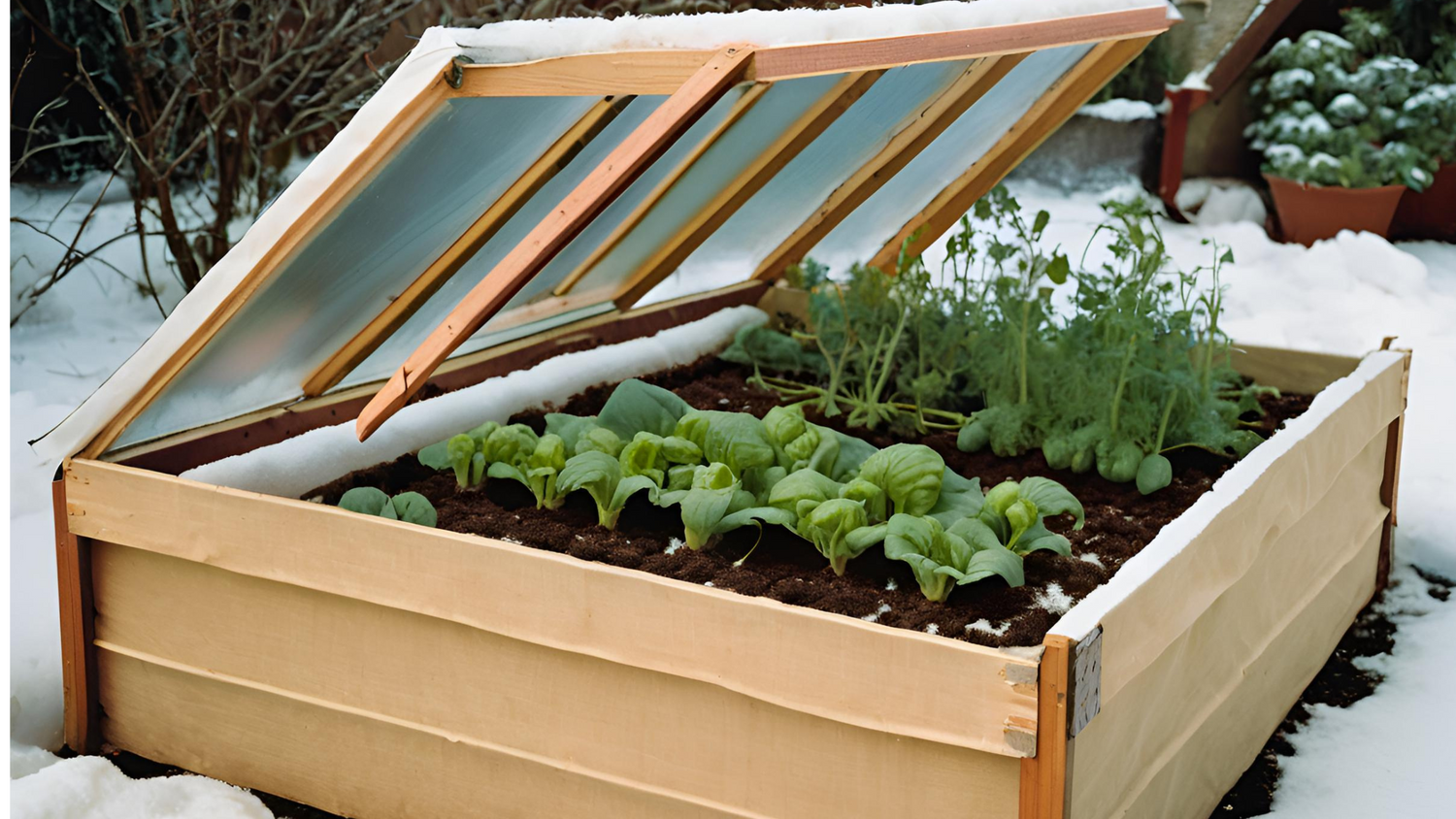As the leaves begin to fall and the air adopts a cooler edge, many gardeners start to wind down, accepting the end of the growing season. However, the harvest can continue with the clever use of cold frames. Cold frame gardening, a method that has been around for centuries, is experiencing a resurgence. It's a simple, effective way to extend the growing season well into the colder months, and for the dedicated gardener, it offers a way to keep the garden alive even under a blanket of snow. In this comprehensive guide, we'll walk through everything you need about cold frame gardening and how it can revolutionize your garden, extending your growing season well into the chilly months and possibly through the winter.
What is Cold Frame Gardening?
Cold frame gardening involves using unheated, enclosed chambers that trap sunlight and warmth, creating a microclimate that can be several degrees warmer than the external environment. Essentially, these structures protect plants from extreme weather, frost, and pests, providing an insulated environment for growth when outside temperatures typically lead to dormancy.
A cold frame typically consists of a transparent lid angled towards the sun, sides made of wood, brick, or bales of straw, and no bottom. This simple yet effective design captures and retains solar heat while sheltering plants from cold winds and frost, creating an ideal growing environment for various plants.
Benefits of Cold Frame Gardening
- Extends Growing Season: One of the most significant benefits of using a cold frame is extending the growing season. With a cold frame, you can start your spring planting earlier and keep your garden productive well into fall and sometimes through the winter, depending on your location.
- Energy Efficiency: Cold frames require no additional energy sources. They rely entirely on the sun for heat, making them an eco-friendly option for extending the growing season.
- Pest and Disease Control: Cold frames' enclosed nature creates a barrier against pests and diseases, reducing the need for chemical interventions and ensuring healthier plants.
- Versatility: Cold frames can be used to grow a wide range of vegetables, herbs, and flowers outside their usual seasons, enhancing your garden's productivity and diversity.
Building or Buying a Cold Frame
You can either build a cold frame yourself using recycled materials like old windows for the lid and timber for the frame, or you can buy a ready-made one. Building your cold frame allows for customization to fit your specific garden space and needs, potentially saving money. Numerous commercially available options are convenient and effective for those less inclined towards DIY.
Best Practices for Cold Frame Gardening
To get the most out of your cold frame gardening experience, follow these best practices:
- Location: Place your cold frame in a south-facing position to maximize sunlight exposure. Ensure it's positioned away from shade-causing trees or buildings.
- Ventilation: On sunny days, even in winter, the temperature inside a cold frame can rise high enough to damage plants. It's crucial to vent the cold frame by opening the lid slightly during the day to prevent overheating and closing it again in the afternoon to retain heat overnight.
- Watering: Plants in a cold frame may require less water than those in the open air due to reduced evaporation, but they do still need moisture. Check the soil regularly and water gently as needed.
- Selection of Plants: While many plants benefit from the protection of a cold frame, some are better suited to this environment than others. Hardy vegetables like kale, spinach, and carrots are excellent choices for winter gardening in a cold frame.
Extending Your Growing Season
To maximize the effectiveness of your cold frame and truly extend your growing season, consider the following tips:
- Early Start: Use your cold frame to start seedlings early in the season. This head start can lead to earlier harvests and higher yields.
- Overwintering: Some perennial plants, especially those that are marginally hardy in your zone, can benefit from the protection of a cold frame during the coldest months.
- Succession Planting: Practice succession planting within your cold frame by rotating crops and planting new seeds as soon as one crop is harvested. This ensures continuous productivity.
Challenges and Solutions
While cold frame gardening is highly beneficial, it comes with challenges, such as managing temperature fluctuations and pest invasions. Monitoring the temperature daily and adopting an integrated pest management strategy can mitigate these issues, ensuring your cold frame gardening success.
Regularly monitoring the internal temperature of the cold frame is vital to address temperature fluctuations, especially during extreme weather conditions. If possible, this can be achieved using a simple thermometer or even installing temperature-regulating technology. Insulating materials around the cold frame can also help stabilize the internal temperature.
Regarding pest invasions, employing integrated pest management practices is crucial. This involves a combination of preventive measures such as using physical barriers, introducing beneficial insects, and practicing good sanitation to minimize pest problems. Regular inspection of plants for signs of pest damage is also essential in catching infestations early.
By being vigilant about temperature control and implementing proactive pest management, you can enhance the success of your cold frame gardening and enjoy a bountiful harvest throughout the year.
Final Thoughts
Cold frame gardening is an invaluable method for extending the growing season, enabling winter gardening, and enhancing the sustainability of your gardening practices. By understanding the basics of building and maintaining a cold frame, alongside best practices for selecting and caring for plants within it, gardeners can enjoy a bounty of vegetables, herbs, and flowers year-round. Whether you’re a seasoned gardener or a curious novice, adopting cold frame gardening practices promises a rewarding extension to the traditional gardening calendar, bringing fresh produce to your table even in the coldest months.






Leave a comment
This site is protected by hCaptcha and the hCaptcha Privacy Policy and Terms of Service apply.